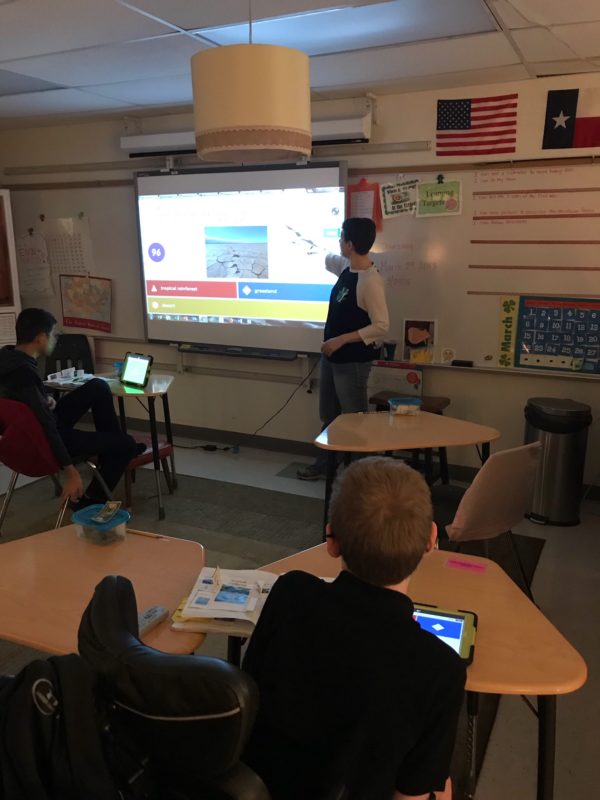In the past two years of using Kahoot! in my special ed class I’ve seen that the language of play is something all students easily understand and enjoy, regardless of any challenges they might have with spelling, vocabulary, etc. As I mentioned in my previous post, I believe that with the right support, a game of Kahoot! can engage every student and make a noticeable learning impact.
Here are several activities I came up with to make my class as inclusive as possible – and Kahoot! is a strategic part of this toolkit!:
Use an interactive notebook for support
While my class is almost paperless when it comes to work, we do maintain an interactive notebook in the core classes. This is where we “take notes.” These notes tend to be highly visual with simplified vocabulary. The interactive notebooks are a resource for my students to use as they practice new skills.
Once we have notes on a subject, I create kahoots for my students to actually USE their notes. I want them to go back to the material over and over to really cement that learning for each student. Playing a kahoot is such a fun way to have the students make the connection between the information in their notebooks and what they can do with that information. It also reinforces that they are SUPPOSED to use their notes as long as they need them.
Some students eventually learn the information and don’t need the notes anymore, but others continue to require that resource in order to be successful. Either way, I want the students to be aware of how to use the resource they are creating.

Reinforce learning with Kahoot! challenges
To reinforce learning, I am really enjoying the challenge feature that allows me to assign a kahoot to students to play in the app after class. Since the order of answer choices is randomized, I can be sure they haven’t just memorized a color or shape with a certain answer.
Another thing that I like about Kahoot! challenges is that students play them in their own pace. I find this game mode particularly beneficial for when I feel the competition might be just a little too intense for a particular day if we play all together on the screen. While the challenge is still a competition, the individual pacing seems to dial it down a notch.
Personalize learning and encourage teamwork
Kahoot! shouldn’t always be about content mastery. You can also use games to train more basic skills like spelling or memorizing shapes and colors. For example, I sometimes create kahoots with a goal to teach students how to type in their own name or identify colors or shapes. He or she can still participate by having a peer tell him or her to select the blue choice or the circle. This encourages learners to work as a team and allows a student to be involved with everyone else, but the skills being practiced are different for that student.
Get to know each other better
Since I am basically a self-contained classroom, I’m planning to use Kahoot! to do quizzes that help us all get to know each other better. I will gather questions and answers from individual students on personal topics like favorite foods, pets, etc., and then put them all together in a big quiz. We can all learn some new things about one another! This is great for creating an inclusive environment in the class.




